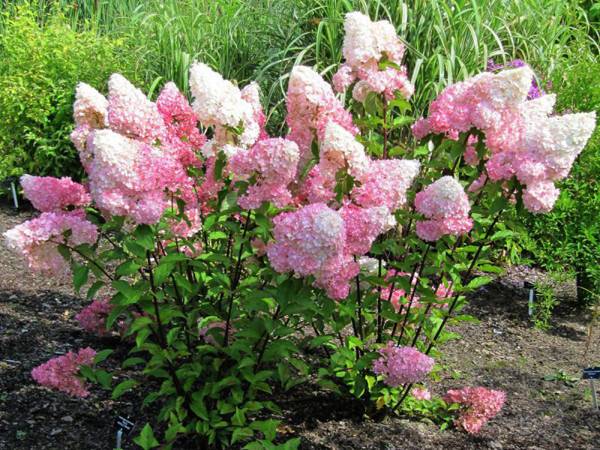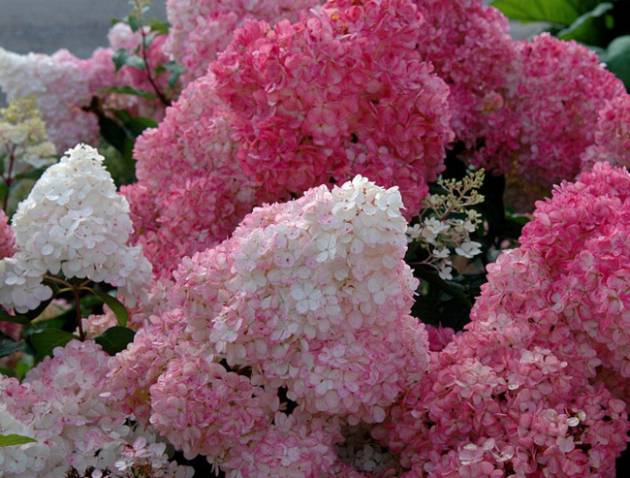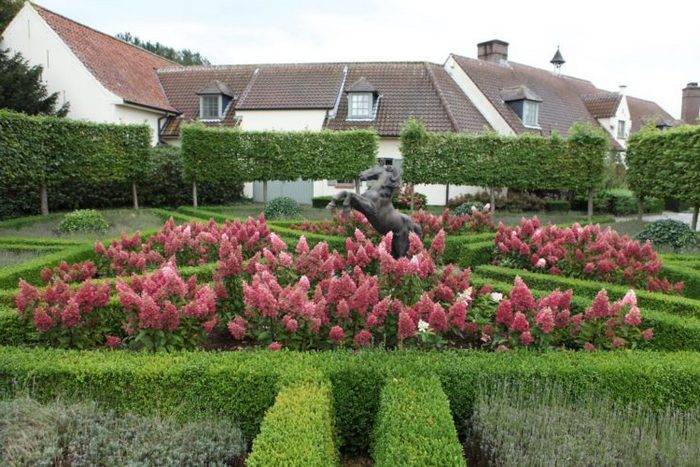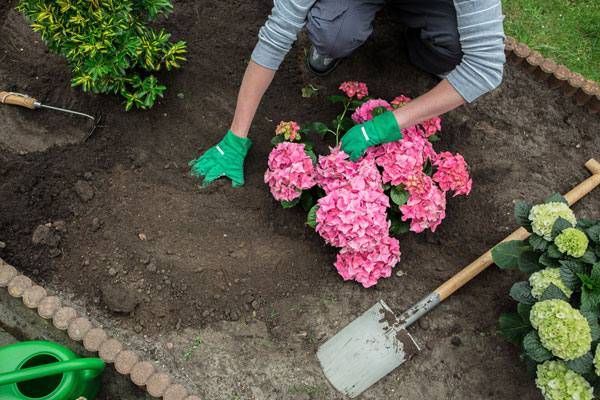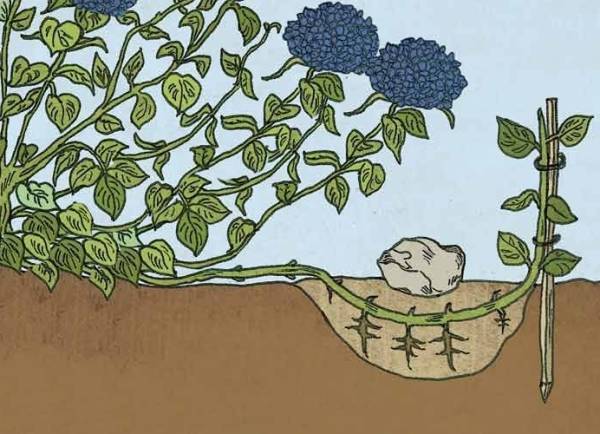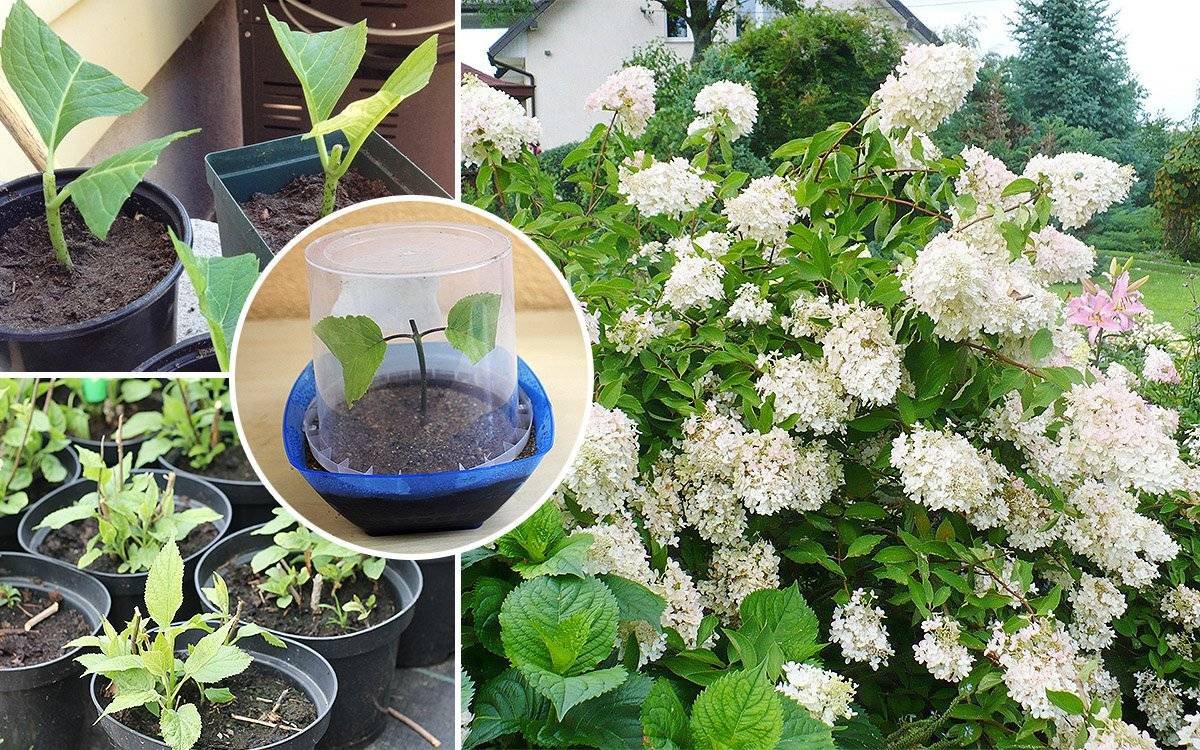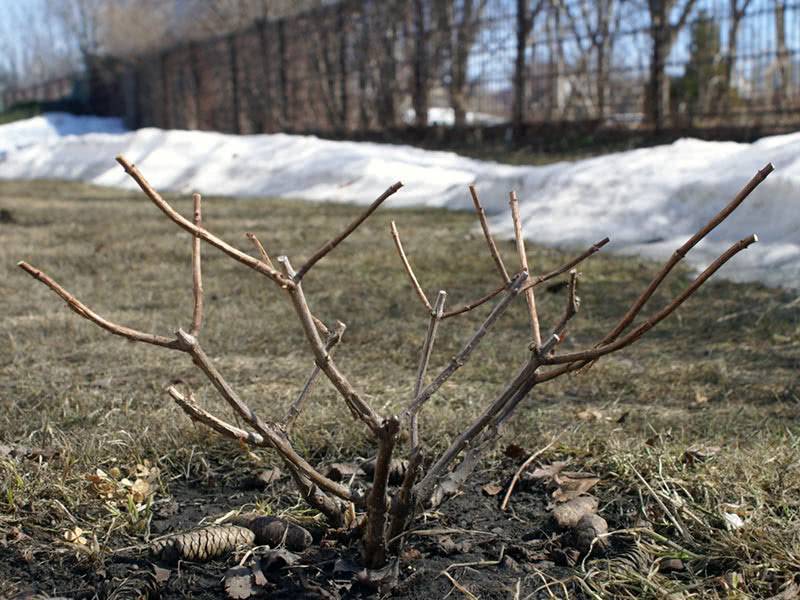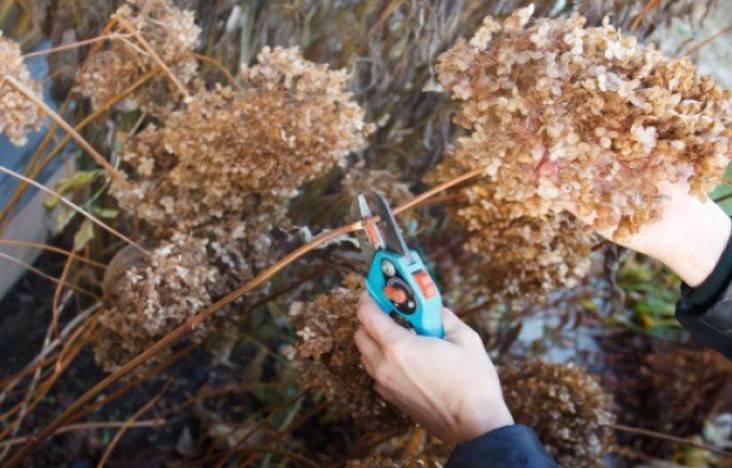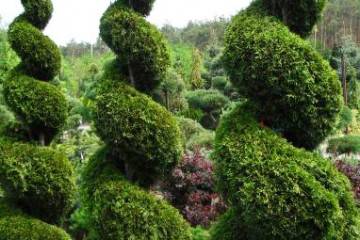Hydrangea Pinky Winky: a description of the features of the variety and its cultivation
Content:
As a result of many years of work of Belgian breeders in 2003, a completely new panicle hydrangea Pinky Winky was born. Frost-resistant and unpretentious, she immediately became the favorite of all flower growers.
Description
The Pinky Winky panicle hydrangea is a perennial deciduous shrub that can reach a height of 1.5-2 m. It belongs to the Hydrangea family, the species Hydrangea paniculata (panicle hydrangea).
The description of the plant looks like this:
- The crown is rounded, the width is approximately equal to the height.
- The root system is superficial, extending beyond the crown.
- Growth rates - the annual growth is 20-25 cm. In the first years, the growth of shoots is not very fast, but as the bush matures, the intensity and speed increase.
- Flowering - annually, on the shoots of the current year.
- The best time to plant is spring.
- Soil acidity - 5.5-6 pH.
- The structure of the soil is light, breathable, nutritious.
- Reproduction - by dividing the bush, cuttings, branches.
- The peak of decorativeness is from July to September.
- Shoots - slightly pubescent, brownish-red color. Elastic, do not bend under the weight of flowers, can do without supports.
- The color of the leaf plates is rich green, in the fall with an interspersed reddish tones.
- The shape of the leaf plates is ovoid, with a wide base and a pointed edge, 10 cm long.
- Flowers - dense, dense panicles, cone-shaped, 20-25 cm long and with a base of 15 cm.
- The color of the inflorescences is white, gradually changing to pink and then red colors.
Due to the gradual blooming of flowers on the brushes, Pinky Winky hydrangea is colored simultaneously in all the listed colors.
Planting process
In the wild, panicle hydrangeas prefer to settle in sunny, calm areas near water bodies. However, the plants can withstand light shade without any problems.
Seat selection
Pinky Winky panicle hydrangeas are quite frost-resistant. Adult plants can withstand temperatures down to 25 - 30 degrees without additional shelter.
But strong winter winds can completely dry out the shoots. To prevent this from happening, shrubs should be planted in areas protected from the winds. An ideal place is considered to be the area between the house and the fence or outbuilding.
Soil preparation
Pinky Winky is a typical flowering shrub that is incredibly demanding on the composition and quality of the soil. Attempts to grow this hydrangea on heavy alkaline soils almost always end in failure. Therefore, before planting a new plant in your area, you should prepare a special soil substrate, consisting of:
- sod land - 4 parts;
- compost - 2 parts;
- peat - 1 part;
- coarse river sand - 1 part.
Some components can be purchased at the store, others can be collected in the forest or in the garden. But it should be borne in mind that most of the black soil sold in specialized stores, in fact, turns out to be a peaty substrate.Lightness, moisture and breathability are the indisputable advantages of such a soil. But together with the positive aspects, they have significant drawbacks.
- Peat retains water very poorly. Therefore, in the summer heat, the root system of a hydrangea planted in such soil suffers from a lack of moisture.
- If, under the site, there are closely lying groundwaters, then the peat, on the contrary, absorbs them, turning into a kind of sponge. Despite the fact that Pinky Winky panicle hydrangea is a moisture-loving plant, excess water almost always leads to root rot and the development of diseases.
The most important criterion for growing hydrangeas is soil acidity. This is exactly the case when the presence of litmus strips or a pH meter in the household is a necessity.
For growing Pinkie Winky, the optimal soils are those in which the acidity index ranges from 5.5 to 6 pH. When the pH parameters deviate in any direction, there is a slowdown in growth, deterioration in the quality of flowering, and sometimes the death of the plant.
Now on sale you can find soil intended for growing hydrangeas. But it must be borne in mind that its acidity and composition is more suitable for the cultivation of large-leaved and tree-like varieties.
When buying such a soil mixture, you should definitely deoxidize it:
- dolomite flour;
- ash;
- slaked lime.
If the compiled soil has an alkaline or neutral reaction, then it must be acidified before planting hydrangeas:
- leafy ground from an oak forest;
- coniferous forest bedding;
- high-moor peat.
Planting procedure
Landing should take place approximately according to the following algorithm:
- A planting hole for a hydrangea is formed from the calculation of its root system. The volume of the hole should be 3-4 times the size of the earthen coma.
- Fill the pit with the prepared substrate, placing a young seedling in the center.
- When planting, be sure to monitor the location of the root collar. It is desirable that it be at the levels of open ground, but slight deepening is allowed - 3-5 cm.
- Thoroughly spill and mulch the trunk circle.
- When watering, a root formation stimulator or phosphorus-potassium fertilizers are introduced.
- If necessary, install a support and fix it.
- All flower buds and 1/3 of the shoots are cut to form a strong root system and ripen branches.
Reproduction of panicle hydrangea
Paniculata hydrangea can be propagated throughout the spring-autumn season.
In early spring and autumn, the plant is propagated by dividing the bush.
To do this, perform the following actions:
- The hydrangea is dug up and divided into several parts, making sure that there are points of growth renewal in each of them.
- Delenki are planted in prepared planting pits filled with a weakly acidic substrate.
- Thoroughly moisten and mulch the trunk circle.
In cases where it is not possible to divide the bush into several parts, they resort to reproduction by layering.
- A groove 15-20 cm deep is dug along the bush.
- A low-growing annual shoot is placed in it.
- They are fixed with hairpins and covered with a mixture of peat and garden sand, leaving only the upper part of the shoot 15-20 cm long on the surface.
- Moisturize and mulch thoroughly.
- The next spring, the young bush is separated from the mother plant and planted in a permanent place in the open ground.
In early June - reproduction is carried out by green cuttings, using the shoots of the current year with a heel.
In July - non-lignified cuttings of the current year without heels. In both cases, cuttings with 2 internodes are used.
Description of actions for grafting
If we talk in more detail about the grafting procedure, then step by step it will look like this:
- The lower leaf blades break off completely, and the upper ones are cut by 2/3 to reduce the load on the seedling and minimize moisture evaporation.
- The cuttings are immersed in the root formation stimulator solution.
- Planting glasses with a perforated bottom are filled with a mixture of peat, sand and leaf earth, taken in a proportional ratio of 4: 2: 1.
- The cuttings are deepened into the substrate, thoroughly moistened.
- They equip mini greenhouses, covering each glass with cut plastic bottles, or place the planting containers in a transparent container and cover with glass.
- The seedlings are ventilated daily and sprinkled carefully.
- After 5 - 10 days, a new shoot appears from the dormant bud, and after another 10-14 days, the first roots. After 25-30 days, the plant takes root and can be removed from an impromptu greenhouse and gradually accustomed to the environment.
- In regions with harsh winters, rooted cuttings are not planted in the ground in the first year of growth, but stored in basements until spring.
How to care for Pinky Winky
If you carefully read the rules of cultivation, caring for Pinkie Winky hydrangea will not be difficult.
Watering and mulching
Pinky hydrangea is responsive to watering, but at the same time it absolutely does not tolerate stagnant moisture and soil compaction in the trunk circle. In this case, it is inappropriate to give any specific recommendations regarding the frequency and intensity of irrigation. It all depends on the climatic conditions of the region.
- In regions with a dry hot climate and drying winds, with a prolonged absence of precipitation, young plants are watered every other day.
- In an area with a humid climate, the regularity of watering is reduced by 2, or even 3 times.
To reduce the temperature of the soil in the zone of the root system, it is mulched with a thick layer of bark, leaf litter or needles. For the same purpose, ground cover plants are planted near the hydrangea.
Top dressing
Hydrangea is very demanding on the application of organic and mineral fertilizers. To achieve abundant and colorful flowering, from early spring until the buds are laid, it must be fertilized every three weeks with a mullein solution: insist 3 kg of manure in 10 liters of water, and then use 1 l of slurry in a bucket of water.
An analogue of multiple dressings can be a one-time application of granular complex fertilizers in early spring. These include:
- Osmocote.
- Greenwold.
- Pokon.
- Kemira is a station wagon.
During the period of budding and flowering, hydrangea needs potassium-phosphorus fertilizers:
- potassium monophosphate;
- superphosphate;
- complex fertilizers for flowering shrubs.
In addition to macronutrients (NPK), the plant needs a portion of microelements (iron, fluoride, calcium, boron, manganese). They can be applied both under the root and on the leaf (by spraying).
Pruning
The first pruning is done in early spring, before the start of sap flow. At this time, remove all frozen and weak branches, shorten all last year's shoots by 2/3 of the growth. This action provokes increased branching and abundant flowering (a flower is laid on each shoot). Also, remove all excess shoots growing inside the bush or intersecting with each other.
In the fall, faded brushes are cut off so that the branches do not break off under the weight of the snow cover, and sanitary pruning is carried out. Extra branches are not removed, since it is impossible to predict in advance how the plant will endure the winter cold.
Winter care
Frost-resistant Pinky Winky does not require any additional care manipulations during the winter period. Adult plants tolerate cold well. And even if some of the shoots freeze, the shrub quickly grows them in the spring. Freezing and flowering are not threatened, because flowering brushes are formed on the shoots of the current year.
Before wintering, the plant is thoroughly mulched, with a 15-20 cm layer of bark or needles, left like this until spring. The only exceptions are young 1-2 year old seedlings, they must be covered with spruce branches, or non-woven covering material.
If a lover of garden flowers is just starting to master the art of growing hydrangeas, then Pinky Winky is exactly the variety with which you should start your acquaintance. Decorative, unpretentious, well adapted to winter cold shrub will be a worthy decoration of the garden. However, experienced flower lovers can also choose this plant.
